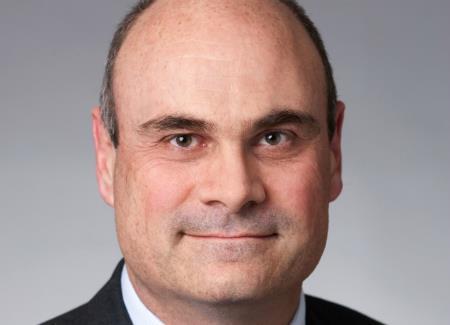Financial results, senior redundancies and a militant billionaire investor

AIG has had a turbulent second half, plagued by bad financial results, senior management departures and a break-up saga involving billionaire investor Carl Icahn.
Here, Global Reinsurance sums up the twists and turns of the story so far.
The beginning
The tale begins in late October, when activist US shareholder Carl Icahn first called for AIG to be broken up.
In an open letter to AIG chief executive Peter Hancock (pictured), Icahn said the global insurance giant is “too big to succeed” and is facing huge regulatory issues.
“The company continues to severely underperform its peers and is now facing an increasingly onerous regulatory burden which will only further erode its competitive position,” wrote Icahn.
It is a “no brainer” that splitting the group will boost shareholder value, he said, adding that he has the support of several large shareholders.
Icahn’s goal
Icahn wants to split the insurance giant into three – life and health insurance, mortgage insurance and general insurance.
Without a breakup, AIG would fall under the Security & Exchange Commission’s designation as a systematically important financial institution (SIFI). This “too big to fail” tag would increase the company’s capital requirements and its regulatory and supervisory burden.
Broken up, Icahn argues, each part of AIG would fall below the SIFI threshold and could return the liberated capital to shareholders.
Icahn owns more than 42 million AIG shares, giving him a 3.4% stake and making him the fifth biggest shareholder.
The reaction
In early November, AIG hit back, as chief executive Peter Hancock dismissed Icahn’s plan.
Presenting AIG’s third-quarter results to analysts on 3 November, Hancock said: “Management and the board have carefully reviewed such a separation on many occasions including in the recent past and have concluded it did not make financial sense.
“We of course will meet with him to further share our conclusions and give him an opportunity to elaborate on his views.”
He also said that AIG saw “tremendous benefit” in having its life and non-life businesses combined.
He pointed out that AIG’s SIFI status had not affected the insurer’s ability to return capital to shareholders, and that as AIG is regulated globally, the additional costs associated with compliance as a SIFI were “a fraction” of total compliance costs.
He also noted that ratings agencies give AIG credit for its diversification, and so splitting the businesses would mean that less capital would be available to shareholders.
The bad news
But the third-quarter results also brought the bad news that AIG might cut around 400 senior staff, bolstering Icahn’s position.
AIG posted a net loss of $231m for the third quarter, compared to a $2.19bn profit a year earlier, as the American insurance firm was hit by market volatility.
The insurer said that restructuring, including severances and information technology improvements, would save the business $400m to $500m a year.
The cost savings will result in as many as 400 senior staff going, according to Bloomberg.
That would mean around 20% of its senior staff leaving the firm.
The third quarter results ended a successful four-year stretch for AIG in which its share price tripled from $20 in November 2011 to around $60 dollars in early November.
Gathering strength
Then, on 6 November, the campaign to break up AIG gathered strength as Nomura analyst Clifford Gallant wrote a note to clients saying there “are certainly plans worth exploring” which could help the insurer shed its SIFI designation and return money to investors.
“AIG has a great global franchise,” Gallant noted, but “the company’s operating performance is below its potential.”
The first public sign of the strategy to clear out top level staff was shown on 20 November, when the news broke that AIG UK managing director Jacqueline McNamee was to leave the company as part of cuts affecting more than 300 managers globally.
Shareholder vote
Further news came on 24 November when Icahn said he will take his campaign to break up AIG to a shareholder vote.
Icahn said it has become “abundantly clear” in his talks with AIG that chief executive Peter Hancock will not “sincerely consider” a breakup.
AIG has been meeting large investors and analysts and has signalled that it will boost shareholder value and cut costs, and is looking for at least one disposal, according to Global Reinsurance’s sister title Insurance Times.
Redundancies
The next update came on 11 December, when the news broke that four AIG executives had lost their jobs.
The bosses leaving were:
-
Chief finance officer David Herzog
-
Head of commercial insurance John Doyle
-
Head of Asia Pacific operations Jose Hernandez and Eric Martinez, executive vice president of claims and operations
Share repurchase
Yesterday AIG repurchased around $9.7bn shares of AIG common stock.
AIG chairman Douglas Steenland said: “This additional authorisation will enable AIG to continue returning excess capital to shareholders, while finalising authorization plans for 2016.
“The timely return of excess capital to shareholders is one of AIG’s strategic priorities.”
In light of Icahn’s appeals to AIG shareholders that the company should be broken up, the repurchase could be seen as an olive branch to AIG investors.
The future
AIG’s Hancock is expected to update investors on his strategy before reporting fourth-quarter results.







No comments yet